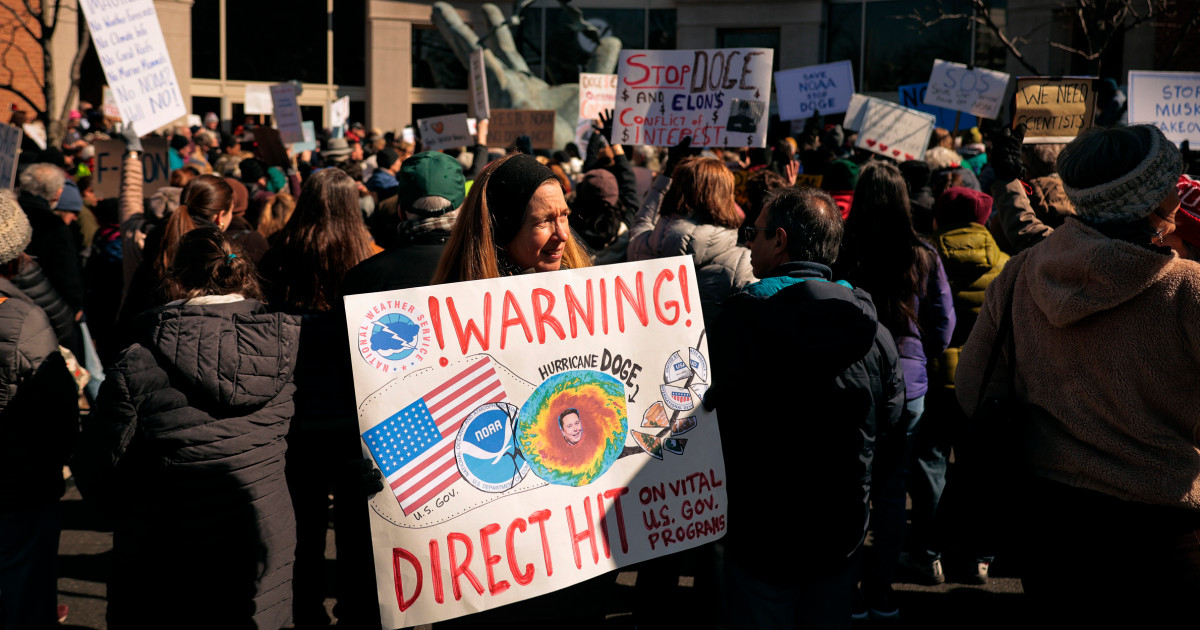NOAA Workforce Reductions: A Threat to Accurate Weather Forecasts and Public Safety?
The National Oceanic and Atmospheric Administration (NOAA) plays a pivotal role in safeguarding public safety through its weather forecasting and climate monitoring services. However, recent workforce reductions at NOAA have raised significant concerns among former employees and experts in the field. As the agency grapples with budget constraints, the implications of these cuts could potentially compromise the accuracy of weather forecasts and the effectiveness of essential safety programs. This article delves into the ramifications of NOAA’s workforce reductions, exploring how they could impact public safety and preparedness.
The Importance of NOAA in Weather Forecasting
NOAA operates several critical divisions, including the National Weather Service (NWS), which provides vital weather forecasts and warnings. These services are essential not only for daily planning but also for responding to severe weather events that can pose risks to life and property. The agency utilizes advanced technology and a dedicated workforce to analyze meteorological data, track storms, and disseminate information to the public.
Accurate weather forecasting depends on a robust infrastructure of trained meteorologists, data analysts, and support staff. NOAA’s ability to predict severe weather events—such as hurricanes, tornadoes, and floods—has proven crucial in mitigating the impacts of these disasters. A decrease in personnel threatens this capacity, raising alarms about the future reliability of weather predictions.
Concerns Raised by Former NOAA Employees
As NOAA faces budget cuts, former employees have begun to voice their concerns regarding the potential fallout. Many of these individuals have dedicated their careers to enhancing weather forecasting and public safety, and they fear that the reductions will lead to:
- Decreased Accuracy: With fewer personnel, the ability to analyze data and produce timely forecasts may diminish, leading to less accurate weather predictions.
- Delayed Responses: A reduced workforce could slow the response times for issuing warnings about severe weather events, potentially endangering lives.
- Impact on Research: Ongoing research projects aimed at improving forecasting methods and understanding climate change may be curtailed, hindering progress in these critical areas.
These concerns reflect a broader anxiety about the sustainability of NOAA’s mission in the face of fiscal constraints. The implications extend beyond just the agency’s internal operations; they touch on public safety at large.
The Budgetary Landscape: A Double-Edged Sword
Budget constraints are not new to federal agencies, and NOAA is no exception. The agency has faced funding challenges for years, often leading to difficult decisions regarding staffing and resource allocation. While budget cuts may be seen as a necessary measure within the context of federal spending, the ramifications for NOAA’s operational capabilities are profound.
For example, the NWS relies heavily on real-time data collection and analysis. If reductions in workforce lead to a reduction in the number of meteorologists available to interpret this data, the quality of forecasts could suffer. Moreover, NOAA’s ability to hire and retain skilled professionals may be compromised, creating a long-term challenge for maintaining a knowledgeable workforce.
Public Safety and Preparedness: The Ripple Effect
The impact of NOAA workforce reductions extends into the realm of public safety and preparedness. Accurate weather forecasts are integral to disaster preparedness initiatives at the local, state, and federal levels. Emergency management agencies depend on timely and reliable information to develop response plans, allocate resources, and communicate risks to citizens.
When forecasts are less accurate, the consequences can be dire. For instance:
- Increased Casualties: Inaccurate warnings can lead to people ignoring alerts or not taking appropriate precautions, resulting in higher casualties during severe weather events.
- Economic Losses: Poor forecasts can disrupt businesses, agriculture, and transportation, leading to significant economic repercussions.
- Public Trust Erosion: If the public perceives forecasts as unreliable, trust in NOAA and emergency management efforts can erode, making it harder to effectively communicate risks in the future.
Potential Solutions and Future Outlook
While the challenges posed by workforce reductions at NOAA are significant, there are potential solutions and strategies that could help mitigate the negative impacts:
- Increased Funding: Advocacy for increased funding from Congress could help restore lost positions and improve NOAA’s operational capacity.
- Collaboration with Universities: Partnerships with academic institutions can provide additional resources and expertise, enhancing research and forecasting capabilities.
- Emphasis on Technology: Investing in technology and automation can help streamline processes and alleviate some of the burdens on a reduced workforce.
It’s essential for stakeholders, including policymakers and the public, to recognize the importance of NOAA’s work and the potential risks associated with workforce reductions. By fostering an environment that prioritizes funding and support for NOAA, we can help ensure that the agency continues to fulfill its critical mission of protecting public safety.
Conclusion
In summary, NOAA workforce reductions pose a significant threat to the accuracy of weather forecasts and, consequently, public safety. As the agency faces budget constraints, the ramifications of these cuts could resonate across communities, impacting preparedness and response to severe weather events. While challenges abound, proactive measures and advocacy for NOAA’s mission can help safeguard the future of weather forecasting and public safety initiatives. As stewards of our safety, it is imperative that we support NOAA in its essential role in protecting lives and property from the unpredictable forces of nature.
See more Your Daily Weather



